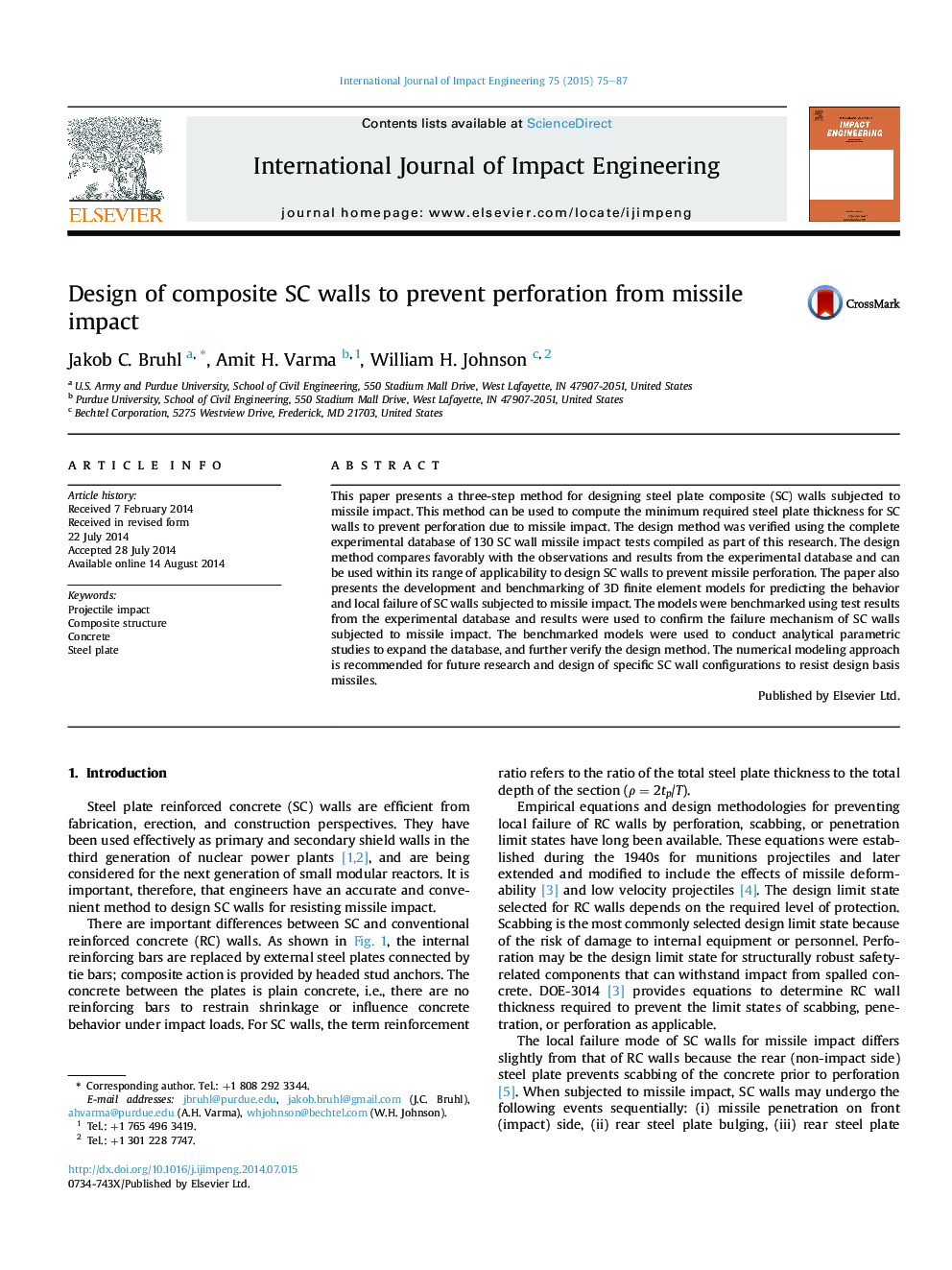| کد مقاله | کد نشریه | سال انتشار | مقاله انگلیسی | نسخه تمام متن |
|---|---|---|---|---|
| 779294 | 1464076 | 2015 | 13 صفحه PDF | دانلود رایگان |

• Steel plate composite wall thickness for missile impact resistance can be efficiently computed.
• Design method provides results that compare favorably with existing experimental data.
• Benchmarked analytical study demonstrates conservatism of design method.
• Steel plate composite wall has missile impact resistance comparable to 30% thicker reinforced concrete wall.
This paper presents a three-step method for designing steel plate composite (SC) walls subjected to missile impact. This method can be used to compute the minimum required steel plate thickness for SC walls to prevent perforation due to missile impact. The design method was verified using the complete experimental database of 130 SC wall missile impact tests compiled as part of this research. The design method compares favorably with the observations and results from the experimental database and can be used within its range of applicability to design SC walls to prevent missile perforation. The paper also presents the development and benchmarking of 3D finite element models for predicting the behavior and local failure of SC walls subjected to missile impact. The models were benchmarked using test results from the experimental database and results were used to confirm the failure mechanism of SC walls subjected to missile impact. The benchmarked models were used to conduct analytical parametric studies to expand the database, and further verify the design method. The numerical modeling approach is recommended for future research and design of specific SC wall configurations to resist design basis missiles.
Journal: International Journal of Impact Engineering - Volume 75, January 2015, Pages 75–87